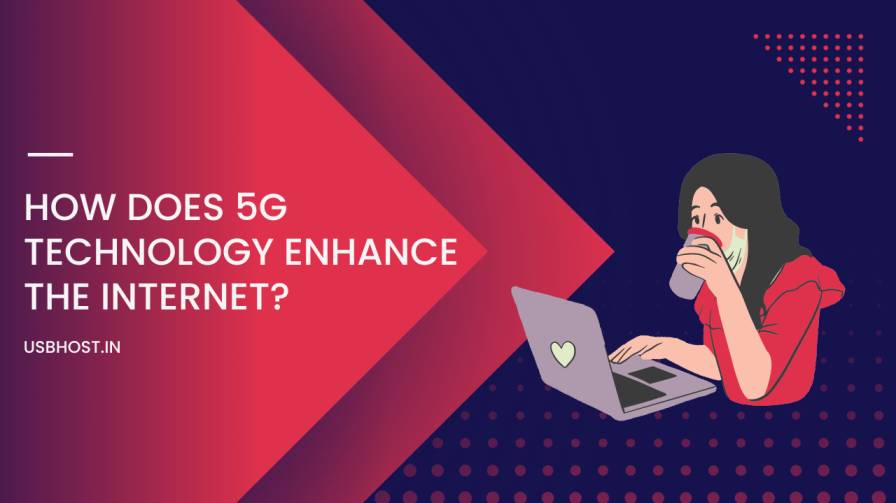Learn how 5G technology is revolutionizing the internet experience. Explore the ways 5G increases internet speed, connectivity, and reach, reshaping communications and innovation.

Rapid growth in the Internet of Things (IoT) has led to an increase from 9.7 billion devices in 2020 to an estimated 29 billion by 2030. Increased connectivity, particularly through the expansion of 5G networks, stands as a key force driving this rapid growth in interconnected devices—the whole world.
Unleashing myriad benefits, 5G technology paves the way for a deeper understanding of its role in powering the Internet of Things. Highlighting specific ways to enhance 5G IoT, this article highlights the symbiotic relationship between these innovations, highlighting their combined potential for the future.
2024 Data Transfer Speeds:
The victory of an IoT system in the market depends on its performance, especially the speed of communication with different devices and platforms. Accelerating this exchange, the advent of 5G technology promises a substantial increase in data transfer rates, revolutionizing the landscape of interconnected device and software interactions.
Expected to outstrip LTE networks by ten times, 5G promises a significant increase in network speeds. This acceleration will empower faster communication between IoT devices, and facilitate faster and efficient data exchange, enhancing connectivity across different platforms.
The increased speed directly benefits smart home gadgets by reducing latency, thereby optimizing their performance. In addition, it increases the speed of data transmission and reception between connected devices, streamlining the flow of information and information exchange.
The increased connectivity will significantly benefit a wide range of IoT devices spanning healthcare and industrial sectors, increasing their operational efficiency and performance.
2024 Greater Network Reliability:
In addition to increased speeds, the reliability of 5G networks ensures a more stable connection. Critical for real-time reliant IoT devices like security cameras and locks, this stability is paramount for consistent, uninterrupted performance, confirming the need for stable network conditions for uninterrupted operation.
With the increase in connected devices, 5G networks promise better device reliability, providing better consumer experiences across various IoT applications.
The advent of next-generation networks ensures continuous high-speed, low-latency connectivity for IoT devices, providing expanded coverage. Manufacturers’ adaptation of 5G-compatible devices to utilize these advancements becomes critical to maintaining seamless, widespread connectivity and taking advantage of these improvements.
To maximize the potential of 5G, manufacturers need to rigorously test new devices and software in various conditions to ensure optimal performance. Flawed devices can diminish the benefits of this advanced network, emphasizing the critical need for thorough testing to avoid limitations in taking advantage of the full benefits of 5G.
Lower Latency:
Data latency, the time it takes for data to transit locations, significantly impacts the performance of IoT devices. Minimal delay is important, especially for applications like autonomous vehicles where milliseconds matter. Expected to reduce latency to less than a millisecond, 5G technology surpasses 4G, enabling real-time communications between IoT devices, promoting quick decision-making, and optimizing operational efficiency, which is a significant leap forward.
5G technology Enhanced Security:
The increasing number of IoT devices increases the severity of security measures. The distributed nature of these devices makes them vulnerable to cyber threats. 5G technology strengthens security through network segmentation and edge computing. Taking advantage of network slicing, IoT devices can be connected to different virtual networks tailored to meet their specific security needs, strengthening their defense against potential cyber-attacks in this emerging landscape. Does.
Edge computing’s localized data processing minimizes network data transmission, reducing the risk of cyberattacks. By enabling device-level data processing, it reduces the amount of data transmitted over the network, strengthening protection against potential cyber threats.
Improved Energy Efficiency:
Powered by batteries, IoT devices rely heavily on energy efficiency. The development of 5G technology speeds up data transmission, reduces uptime and saves energy. Particularly beneficial for remote or underground IoT applications, this enhancement saves energy, extends battery life and optimizes device performance in challenging environments.
5G Use Cases in IoT:
“5G opens up new possibilities for IoT in a variety of applications, including smart cities, healthcare, logistics, and manufacturing.”
#1. Smart Cities:
The integration of 5G technology promotes smart urban solutions including dynamic traffic control, efficient street lighting, waste management, and environmental monitoring. With its high-speed data and minimal latency, 5G empowers real-time data analysis, facilitating highly responsive and effective urban infrastructure management, and enhancing city landscapes for a better life.
#2. Industrial IoT (IIoT)
5G paves the way for smart manufacturing and industrial automation by leveraging its low latency, increased reliability, and capacity for widespread device connections. This technology facilitates real-time equipment monitoring, process streamlining, and remote machinery control, marking a substantial advancement in increasing operational efficiency within industrial settings.
#3. Smart Utilities
By enabling smart utility metering and infrastructure monitoring, 5G increases efficiency within water and energy systems. This assists in waste reduction, quickly identifying faults and leaks, contributing to optimized operations, and improved resource conservation.
#4. Retail
Leveraging 5G-enabled IoT solutions, retail shops streamline inventory management, analyze customer behavior, and deliver tailored shopping experiences. Effectiveness is significantly enhanced with high-speed connectivity, interactive displays, smart shelves, and location-based services, reshaping the retail landscape to improve customer engagement and operational efficiency.
#5. Supply Chain Management
Using 5G, supply chain management benefits from enhanced tracking and monitoring capabilities. Equipped with sensors, items relay real-time data on location, temperature, and humidity, ensuring safe and efficient freight transportation, and revolutionizing logistics for optimized operations and enhanced security.
5G Opens Up New Possibilities For IoT:
The impact of 5G on IoT applications that rely on rapid data analysis and real-time decision-making ensures continuous high-speed communications, driving faster business profits. This synergy enables seamless, faster operations, facilitating immediate decision-based benefits across diverse IoT applications.
The advent of 5G empowers IoT applications to customize network characteristics according to their specific needs. Additionally, LTE-M and NB-IoT integrate network functionalities that either expand coverage or reduce battery consumption. As time progresses, control over service levels, data processing locations, and more will become even more configurable and precise.
Continued progress can be achieved by incorporating complementary technologies such as network edge computing. Moving away from centralized cloud data centers, applications operate on distributed cloud servers located close to IoT devices, promising enhanced performance and lower latency for more efficient and responsive operations.
Impact of IoT on the Job Market:
The emergence of 5G technology promotes real-time communication between vehicles, infrastructure and pedestrians. Its low latency and high bandwidth drive advancements in autonomous vehicles, ADAS, and intelligent traffic control systems. GSMA forecasts show that by 2025, more than 20% of 5G-enabled devices will be within the scope of 5G-powered transportation, marking a significant technological shift in this area.
- Increased Demand for Technical Skills: The increase in IoT adoption has increased the need for experts skilled in IoT development, data analytics, cybersecurity, cloud computing, and AI. Skilled professionals are crucial to designing, developing, and effectively managing IoT devices and networks amid growing demand and integration.
- New Job Roles Emerging: The burgeoning IoT landscape will usher in novel job roles and prospects. Industries will pursue IoT architects, data scientists, connectivity experts, and specialized IoT security professionals to navigate the expanding opportunities and demands within the IoT domain.
- Cybersecurity is a priority: Amid the increase in connected devices, rising data breaches and cyber threats have raised concerns. Organizations should prioritize cybersecurity expertise to shield IoT networks and protect sensitive data, highlighting the essential need for cybersecurity professionals skilled in protecting interconnected systems.
- Adapting to existing roles: As IoT advances, traditional job roles will evolve while integrating IoT skills. It becomes important to enhance skills among manufacturing, logistics, and healthcare professionals to effectively harness the potential of IoT technologies, thereby ensuring seamless adaptation to the emerging technological landscape.
- Changing Skill Requirements: As IoT technology advances, traditional job roles may require additional technical skills. Maintaining competitiveness in the job market requires a culture of continuous learning, which motivates employees to adapt, acquire new skills, and remain relevant amid increasing technological demands.
The transformative impact of IoT on our lifestyle and work dynamics is undeniable. With its expansion, there is a need for deeper consideration of the emerging job scenario. To harness the full potential of IoT, organizations must secure specialized technical talent. Embracing IoT opportunities and investing in upskilling has become critical for professionals to thrive in the ever-evolving job market and remain relevant amid this technological revolution.
FAQs
1. What exactly is the impact of 5G technology and IoT convergence on different industries?
The convergence of 5G and IoT technologies promises to revolutionize various sectors such as healthcare, manufacturing, transportation, and smart cities. These advancements enable faster speeds, higher capacity, and lower latency, enhancing operations in these industries.
2. How does the healthcare sector specifically benefit from integrating 5G and IoT?
In healthcare, the combination of 5G and IoT facilitates real-time data transmission and analysis, enabling better telemedicine, remote patient monitoring, and faster communication between medical devices. This makes healthcare delivery more efficient and effective.
3. Can you explain the impact of 5G and IoT on the manufacturing industry?
5G and IoT advancements have a significant impact on manufacturing by increasing automation, predictive maintenance, and real-time monitoring of machinery. This results in increased operational efficiency, reduced downtime, and optimized production processes.
4. What changes can we expect in transportation due to 5G and IoT integration?
Transportation will experience substantial growth through connected vehicles, smart traffic management, and real-time data sharing. This results in better security measures, optimized traffic flow, and efficient management of the transportation network.
5. How do 5G and IoT advancements impact the development of smart cities?
The integration of 5G and IoT technologies is critical in building smarter and more sustainable cities. This enables efficient public services, better energy management, and better connectivity, thereby enhancing the quality of life of urban residents.
Find the best and fast with reliable hosting – Click here
